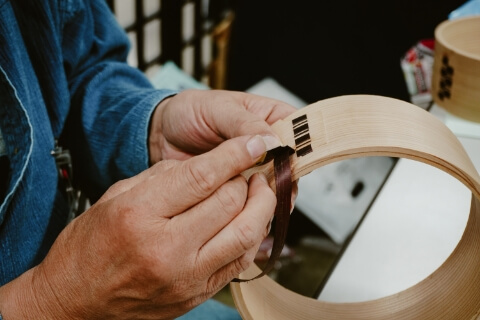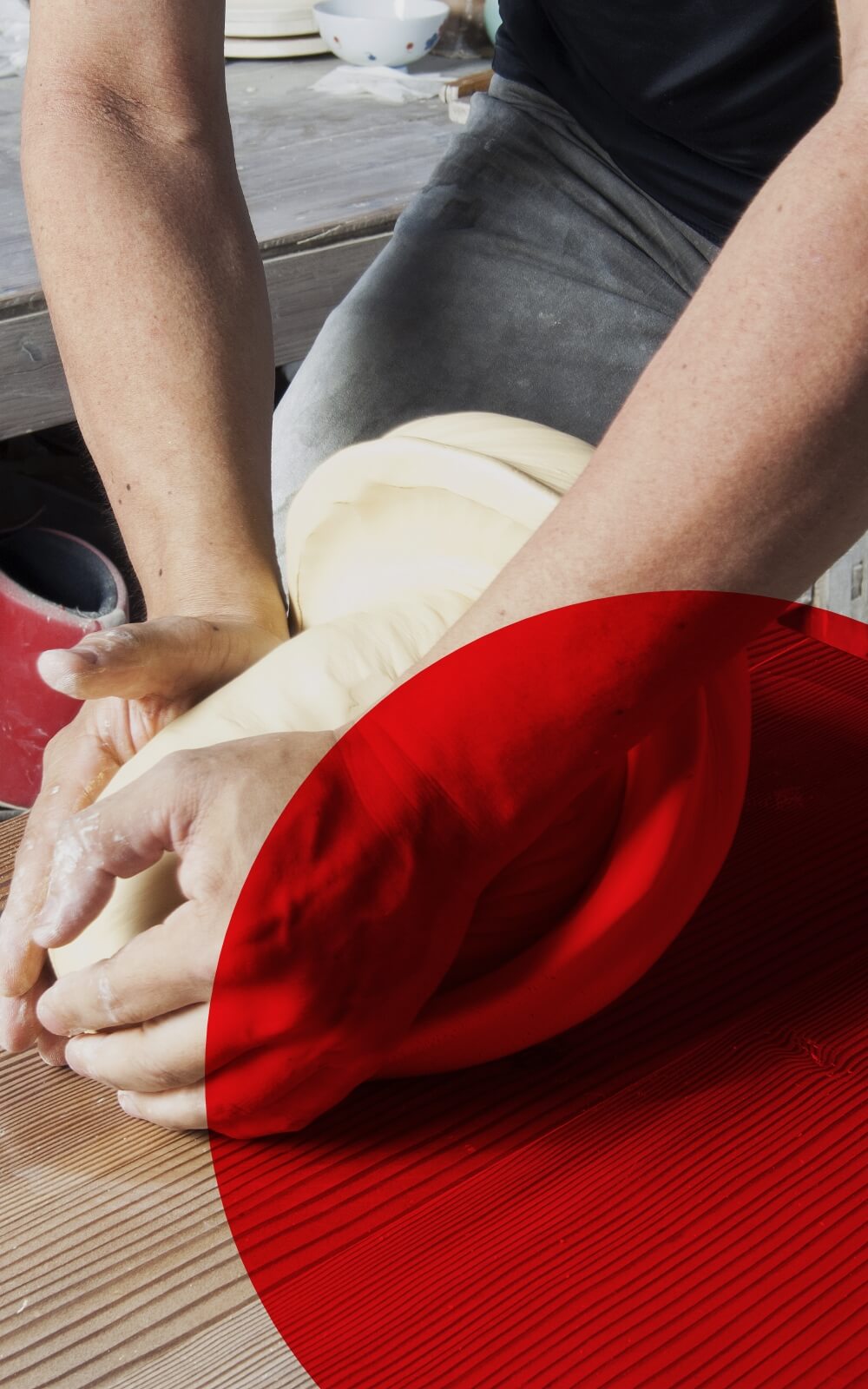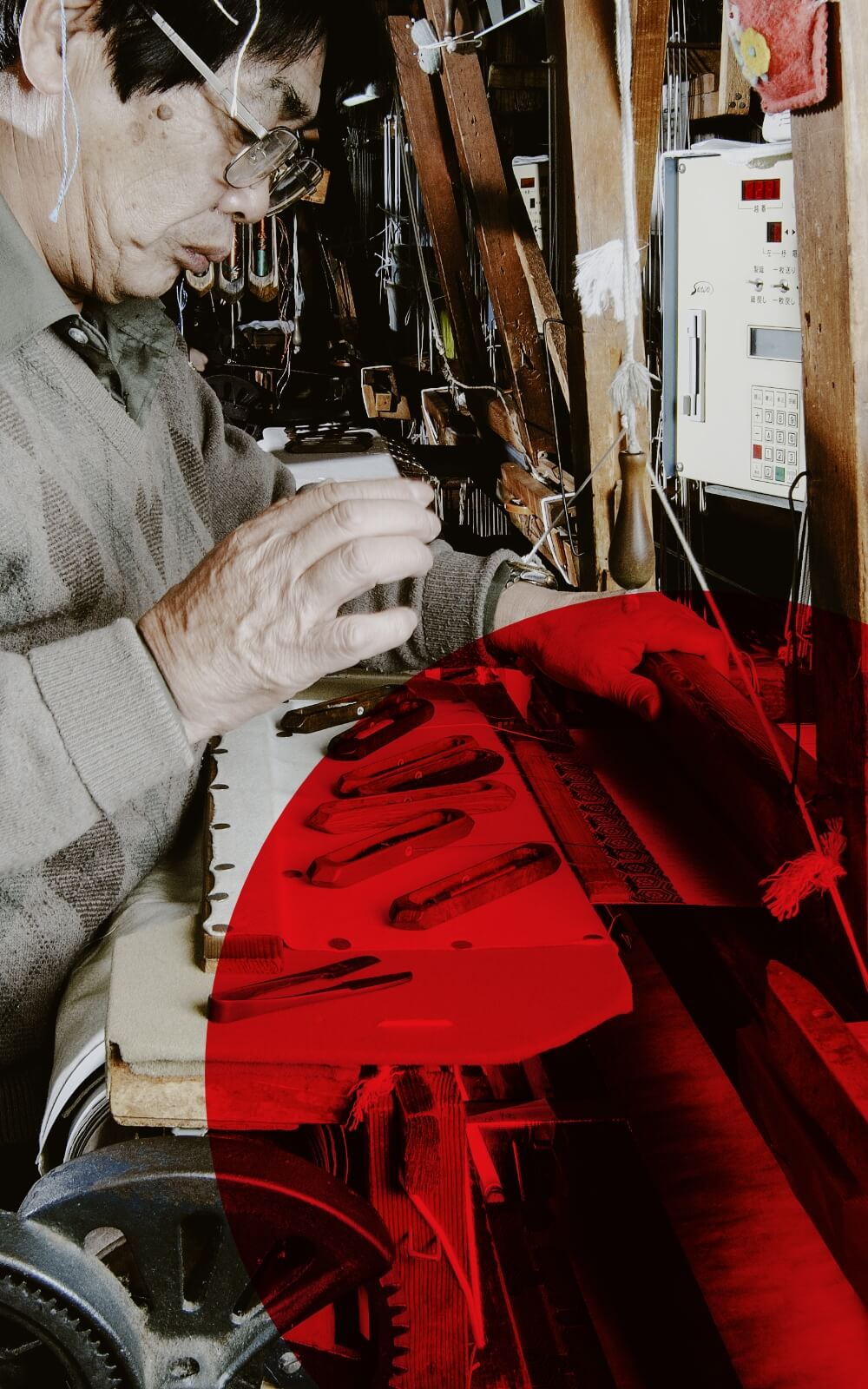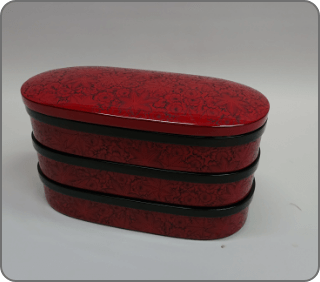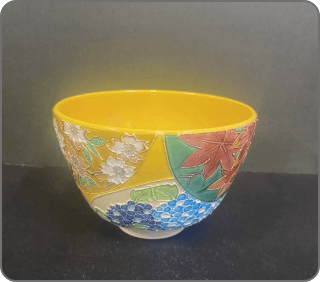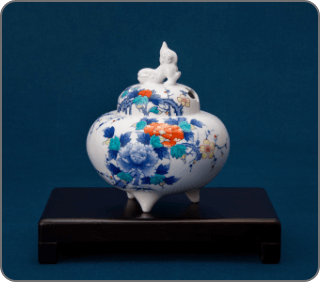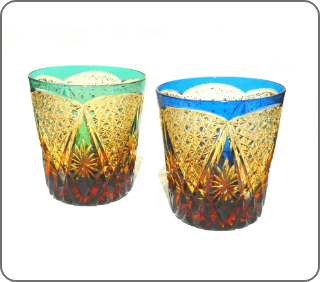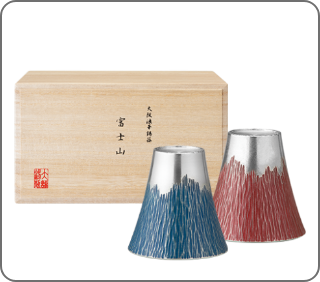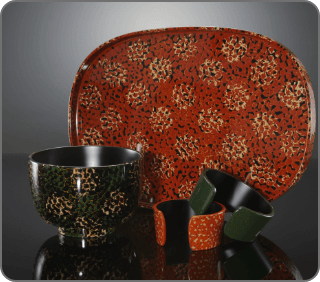






About Sugo-Ude Artisan Street
When you hear the term “traditional crafts”, what image comes to
mind?
Some people may consider them “prestigious”, while others may
think of them as “old-fashioned”.
Indeed, each of the craft products made by traditional artisans
has a long history.
However, as times change, so do people’s lifestyles.
And as lifestyles change, the things that are used in daily life
change as well.
Time and time again, craft products have changed their forms to
suit the times and their uses to suit our lifestyles.
The techniques and innovations developed for such purposes are
firmly embedded in modern craft products, and even today,
traditional craft artisans continue to challenge themselves daily
to develop new techniques and exercise their creativity in order
to deliver craft products that will enrich the lives of the people
who use them.
凄腕職人街
Traditional Crafts List
- All
- West
- East

Nanbu Tekki

Edo Kiriko

Sakai Uchihamono

Osaka Naniwa Suzuki

Nara Fude

Tsugaru nuri

Odate Magewappa
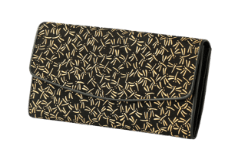
Koshu Inden

Edo Mokuhanga
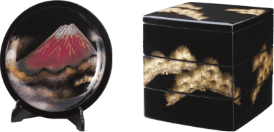
Wajima nuri

Akazu yaki

Osaka Senshu Kiritansu

Kyo Kanoko Shibori

Kyo yaki Kiyomizu yaki

Imari Arita yaki

Shigaraki yaki

Omi Jofu

Sakai Uchihamono

Osaka Naniwa Suzuki

Nara Fude

Osaka Senshu Kiritansu

Kyo Kanoko Shibori

Kyo yaki Kiyomizu yaki

Imari Arita yaki

Shigaraki yaki

Omi Jofu

Tsugaru nuri

Nanbu Tekki

Edo Kiriko

Odate Magewappa

Koshu Inden

Edo Mokuhanga

Wajima nuri

Akazu yaki
Nanbu Tekki

Nanbu ironware is made in Morioka and Mizusawa cities in Iwate Prefecture. This ironware has a history of 400 years and is also the first to be certified as a traditional Japanese craft. It is a well-balanced ironware that is very easy to use, considering its weight.
Odate Magewappa
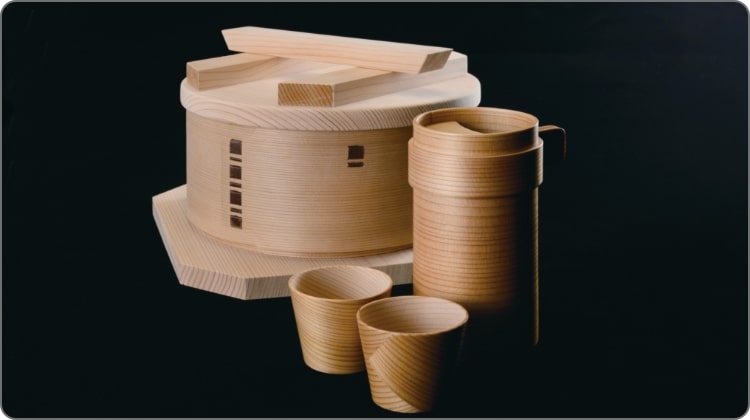
Odate Magewappa is steam-bent woodware made in the Odate City area of Akita Prefecture. This traditional craft representing Japan is well known both domestically and internationally. It is characterized by the beautiful color and grain pattern of natural Akita cedar. It is loved by people of a wide range of generations and lifestyles.
Edo Mokuhanga

Edo woodblock prints are a unique Japanese style of multicolored woodblock prints. Approximately 200 years ago, ukiyo-e woodblock prints became popular as full-color prints that the common people of Edo (present-day Tokyo) could easily enjoy, which led to the establishment of the techniques and culture of Edo woodblock prints. These woodblock prints are loved as works of art unique to Japan.
Wajima nuri

Wajima lacquerware is a nationally designated important intangible cultural property and also an important intangible cultural property among lacquerware production areas. Each piece is made using a unique method that requires at least 120 steps to complete. Wajima lacquerware is hand-crafted by craftsmen, resulting in a sturdy and gorgeous product.
Akazu yaki

Akazu ware is one of the six oldest kilns in Japan, with a history of more than 1,000 years. Akazu ware prospered as the official kiln of the Owari Tokugawa family. The Akazu region is blessed with high-quality clay, and the techniques and methods developed by potters have been carried on from generation to generation, with products now being made using seven types of glazes and 12 types of decorative techniques.
Koshu Inden

Kofu City, located in Yamanashi Prefecture, is also known for its leather products made using the traditional craft of Koshu Inden. This technique involves using deer leather and applying lacquer to create intricate patterns on items such as bags, wallets, and small accessories. The more you use these products, the more they become a part of your hand, gaining a deeper and more refined luster, and growing in sentimental value.
Osaka Senshu Kiritansu

Osaka Senshu paulownia chests are said to be the "peak of paulownia chests". Osaka Senshu paulownia chests are characterized by the use of thick, carefully selected, high-quality paulownia wood, a large number of assemblers, and the careful construction and finishing. They are made with great care using techniques that have been passed down from generation to generation.
Kyo Kanoko Shibori

Kanoko tie-dyeing got its name from the fact that the pattern resembles the spots on a fawn. Among the approximately 50 different techniques, "Hittashibori" is the most well-known. One tie-died piece can have as many as 150,000 grains in its appearance. Some pieces can take one year to complete.
Kyo yaki Kiyomizu yaki
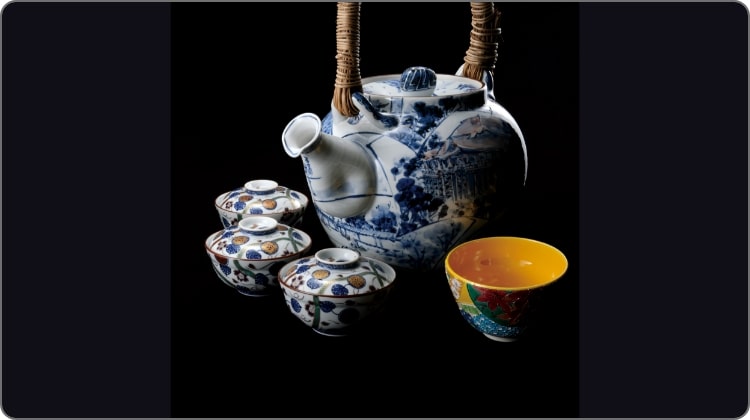
Kyo ware and Kiyomizu ware are the representative pottery of Kyoto. There are no specific clays, glazes, or techniques that define Kyo or Kiyomizu ware. This pottery is a masterpiece that exudes delicate and elegant beauty, and is characterized by its high-class orientation, high decorativeness, and versatility.
Imari Arita yaki
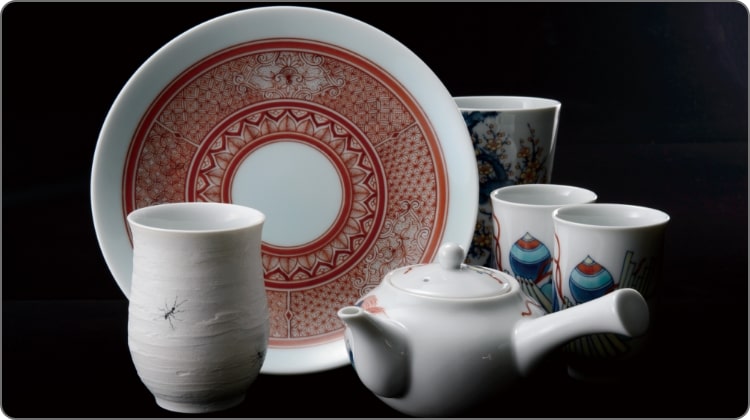
Imari ware is produced in what was once Hizen Province, centered around present-day Arita. Imari ware is also commonly known as Nabeshima ware. These masterpieces are created entirely by one person, from shaping it on the potter's wheel to painting.
Shigaraki yaki
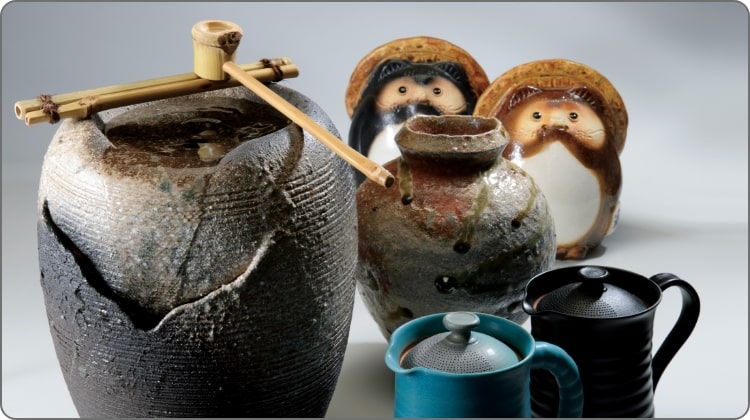
Shigaraki ware is one of Japan's six oldest kilns. Shigaraki ware brings out the unique earthiness of Shigaraki and conveys the nuance of "wabi-sabi" to this day as an art woven from earth and fire. The most distinctive feature of Shigaraki ware is the production of large pieces. Shigaraki is known as a production area that produces large pieces as well as a wide variety of pottery types.
Omi Jofu

Jofu is a plain-woven linen fabric. Omi Jofu fabric was born in a fertile and humid climate, and was given as gifts to the shogunate as far back as the Muromachi Period (1333-1573). It is highly breathable and hygroscopic, has excellent water absorption properties, and is said to develop its own unique appearance the more you use it.
Edo Kiriko

Edo Kiriko is a glass craft technique that began in Edo (present-day Tokyo) at the end of the Edo Period (1603-1867). These detailed pieces are not created based on pre-designed sketches, but are instead made based on feeling, which requires highly skilled techniques. A variety of products are made, adorned with patterns that range from traditional to modern.
Sakai Uchihamono

Sakai cutlery has 600 years of tradition that has been passed down to this day. A characteristic of Sakai cutlery is that it is produced by craftsmen who specialize in each process (blacksmithing, sharpening, and handle attachment). Sakai cutlery is a masterpiece that has a large number of devotees, with 90% of chefs across Japan saying their knives are from Sakai.
Osaka Naniwa Suzuki
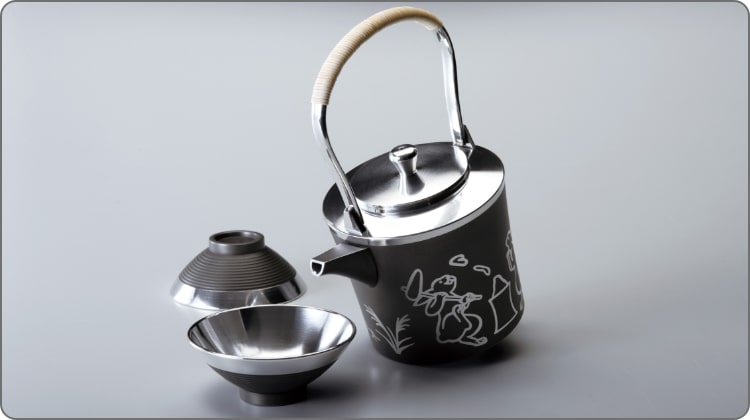
Tinware, which became popular during the Edo Period (1603-1867), was mainly used in the imperial court. There are a variety of styles, from products that have been around for a long time to ones that meet modern needs. Tin doesn't break even if you drop it, which means it lasts a lifetime, and although it is metal tableware, it fits comfortably in your hand.
Nara Fude

Nara brushes are manufactured in the area of Nara City and Yamatokoriyama City, Nara Prefecture. The roots of Japanese brush making are said to be the Nara brush. Using the hair of over a dozen different animals for their construction, each brush is created using a traditional technique called the kneading method, which combines different hair qualities such as elasticity and length.
Tsugaru nuri

Tsugaru lacquerware, produced mainly in Hirosaki, Aomori Prefecture, is an important intangible cultural property. Its name was coined when it was exhibited at the Vienna World's Fair in 1873. Tsugaru lacquerware, characterized by its elegant lacquering, incorporates the techniques of Kara, Nanako, Nishiki, and Monsa lacquerware styles, and is a traditional craft representing Aomori Prefecture.

Area Map
A map that shows the production areas for different traditional craft products.
Event

伝統的工芸品展 凄腕職人街
- Venue
- 2023/10/11(Wed)〜10/16(Mon)
- Venue
- Kintetsu Department Store Main Store Abeno Harukas Wing Building9F
- Time
-
10/11(Wed):12:00〜20:00
10/12(Thu)〜10/15(Sun):10:00〜20:00
10/16(Mon):10:00〜17:00
- Adress
- 1-1-43 Abenosuji, Abeno-ku, Osaka, Japan
- WEB
- https://abenoharukas.d-kintetsu.co.jp/event/1/202309shokunin_kougei.html
- From Shin-Osaka
- Subway Midosuji Line Tennoji - Shin-Osaka Approx. 21 minutes
- From Umeda
- Subway Midosuji Line Tennoji - Umeda Approx. 15 minutes
- From Namba
- Subway Midosuji Line Tennoji - Namba Approx. 6 minutes
- From Kansai Airport
- JR Hanwa Line Tennoji - Kansai Airport Approx. 30 minutes
- Airport Limousine Bus Approx. 55 minutes







